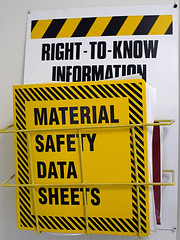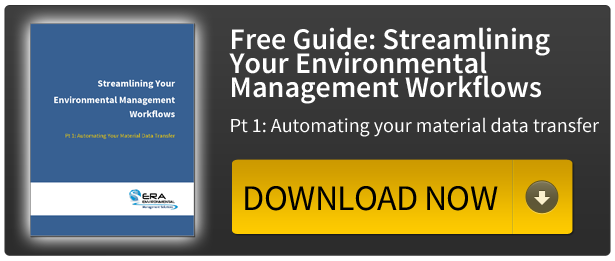 Most environmental professionals associate MSDSs with spending hours manually entering material data into a system. It is one of the most dreaded tasks in most EH&S departments. This dread gets compounded when your MSDSs (Material Safety Data Sheets) look like a confusing mess. A MSDS authored the old-fashioned way without modern MSDS Software can be unreadable or even contain information that can’t possibly be correct.
Most environmental professionals associate MSDSs with spending hours manually entering material data into a system. It is one of the most dreaded tasks in most EH&S departments. This dread gets compounded when your MSDSs (Material Safety Data Sheets) look like a confusing mess. A MSDS authored the old-fashioned way without modern MSDS Software can be unreadable or even contain information that can’t possibly be correct.
The root cause why MSDSs can be so confusing is that they are expected to do two jobs at once, for very different groups:
- End users expect the MSDS to detail the potential dangers of using a material, and also to give chemical composition data, used for calculating environmental emissions from material usage.
- Chemical & material manufacturers need the material specifications on the MSDS to protect their intellectual property and secret recipes. That’s why some MSDSs have abstract ranges like 5-75% for multiple chemicals.
In short, there is an inherent conflict of interests at work in almost every traditional MSDS.
That’s why so many businesses are starting to use some type of MSDS software to avoid this conflict and put their department in stronger position.
Here’s a few example of how MSDSs and MSDS management are changing for the better:
Online MSDS Databases
The web has become an enormous repository for MSDS data, and many chemical manufacturers have started to publish MSDS data on the web for their customers.
Pros: Easily searchable, Ability to Copy and Paste data instead of entering it, Access from anywhere.
Cons: No verification of the data, Large number of MSDS makes it difficult to find the few you actually need.
MSDS Management Outsourcing
Rather than deal with the hassle of MSDS management in-house, many businesses are outsourcing their MSDS management and hiring companies to do the data entry for them.
Pros: High turn-around time, “Set it and forget it”
Cons: More costly compared to other options, Less sustainable, Less in-house EH&S knowledge/experience
Electronic MSDSs
Electronic MSDSs represent the biggest shift away from traditional MSDSs. The physical document, and all of its limitations, are transcribed into digital form through a number of methods, including scanning, spreadsheets , etc.
Pros: Easily searchable, Faster data entry, Easier to share, Easier to translate
Cons: Electronic documents will have all the same limitations as hard copies
Mobile MSDSs
An innovative use of the e-MSDS, mobile MSDSs are kept on a portable USB key so they can be accessed right when they are needed and transferred between facilities easily. Emergency responders, for example, sometimes carry a mobile database of MSDS to use during emergencies.
Pros: Fast upload time once the electronic transcription is complete, Data Sharing
Cons: If the data isn’t useful to begin with, taking it mobile isn’t going to help
Online MSDS Management
A combination of electronic MSDSs and online databases. Online MSDS management usually requires MSDS software to be installed. Many larger companies now implement online MSDS management in their EH&S departments.
Pros: Faster data entry, Easily Searchable, Data sharing between sites
Cons: Relies on accurate source data
MSDS Data Automation
MSDS data automation means getting electronic MSDS data right from the source: the vendor. It’s a form of one on one data sharing that protects the manufacturer’s data from the public and gives you better data.
Pros: Faster data entry, More accurate Data
Cons: Requires a shared interface and strong existing partnership
If you're interested in the automation of MSDS data to/from your vendor/customer, check out our EHS data automation eBook by clicking the button below.
Have you implemented any of these alternative forms of MSDS management in your business?
This Blog was Co-Authored By:



January 30, 2012

Comments